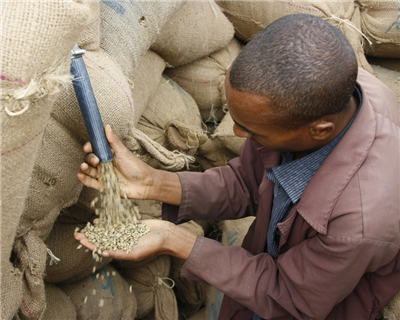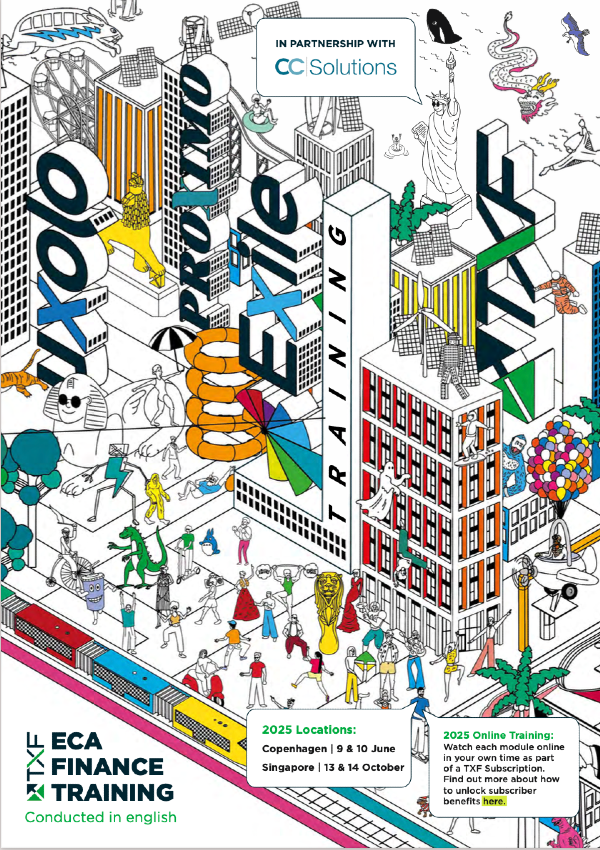Warehouse receipt finance comes of age
Warehouse receipt finance is spreading fast, giving smaller traders and bigger farmers or cooperatives the chance to tap finance immediately while they protect their produce and hopefully negotiate better prices for it.

Warehouse receipt finance is spreading fast, giving smaller traders and bigger farmers or cooperatives the chance to tap finance immediately while they protect their produce and hopefully negotiate better prices for it.
There remain huge challenges though. If not properly managed, warehouses remain vulnerable to everything from theft or fraud to insect infestation. And although using a collateral manager provides more comfort to banks extending the credit, there still aren’t enough active in Africa.
How warehouse receipt finance works
With warehouse receipt finance, a farmer or trader delivers his produce to a warehouse that has been approved by a bank or other lender. The warehouse, or collateral management company in charge of it, then issues a receipt vouching for the quantity and quality of produce being stored. The bank then takes the receipt and provides financing to the farmer or trader – typically up to 70% of its current market value – against it. The receipt acts as collateral for the bank, giving it the right to take ownership of the stored produce if the loan is not repaid.
The positives
“The key advantage of a warehouse receipt is it resolves a whole series of problems at once,” says Edward George, head of soft commodities research at Ecobank.
Firstly, it protects the crop – a big issue in Africa, where an estimated 20% to 40% of harvests rot before reaching market.
It is also “a great way of freeing up financing for the farmer,” says George. “It’s a financial instrument that can be traded. But also, you can lend against it.”
Without warehouse receipt finance, many commercial traders would not have enough collateral to meet banks’ requirements, given the huge quantities of grain that they are dealing with, says Richard Wangwe, head of agriculture at Stanbic Bank Uganda.
Warehouse receipt finance is especially helpful for smaller traders who might struggle to borrow otherwise, agrees Chris Scott, business development manager at Drum Commodities, a collateral manager with 18 subsidiaries across Africa, covering everything from cashew nuts, cocoa and coffee to frozen fish, tobacco and fertilisers.
In a number of instances, “we’ve been told by the banks that certain people would only get access to finance with this type of structure in place and with the collateral management company giving greater weight and authority to warehouse receipts.”
“It reduces the risk for the bank if they can have a third party there, essentially saying ‘If it’s not there, we accept responsibility for that’,” he says.
And even for bigger traders or exporters that already have easy access to finance, the fact that banks can use the stored produce as collateral means that warehouse receipt finance does not eat into their existing unsecured borrowing limits, says Makiko Toyoda, leader of the International Finance Corporation’s (IFC’s) Global Warehouse Finance Programme. “The banks can shift their risk from the borrower’s balance sheet to the commodity itself.”
And because banks’ risk is lower, they can lend at more attractive rates.
Warehouse receipt finance also hands more negotiating power to farmers. If they don’t like the price they’re offered at the farm gate, they can drive their crop to the nearest warehouse, store it there until they receive a better offer and still receive instant ‘payment’ in the form of a loan, notes George.
Commodity exchanges are helping here – providing transparent prices that farmers can check on their phone, notes Toyoda. Previously, market prices were a “black hole” for smallholders.
The challenges
The warehouse receipt finance system only works if warehouses are big enough and cost-efficient, says Hans Bogaard, head of agribusiness at Rabo Development. If the costs of storing a crop and financing it are higher than the increase in price, the aggregator may be able to secure for his crop by waiting, he won’t use warehousing.
It also relies on the warehouses man- agers in charge of produce to take proper care of it.
“A warehouse receipt is only as good as the collateral it is backing,” notes George. “If you were to buy a warehouse receipt for 5,000 tonnes of maize, and then when you went to pick it up it was rotting or it wasn’t all there, straight away word would get out and no one would want to buy warehouse receipts anymore.”
“There are so many quality issues that you have inside warehouses – everything from the cleanliness of the warehouse to the way they store things,” he says.
Fraud is also a huge issue. In India, for example, an estimated $1.5 billion of fraudulent warehouse receipts have been issued over the past 10 years, says George. “Ultimately, it comes down to the quality of the collateral manager and ensuring that all the necessary checks and balances are in place,” he adds. “Because there are dozens of ways that you can defraud a warehouse, and [defrauders are] constantly trying to think of new ways.”
Collateral managers provide comfort
“The biggest challenge for the financing bank is validating those warehouse receipts,” says Scott. “It’s one thing to get a piece of paper saying that X amount of product is at this location. But for that to have any weight, and for anyone to lend with confidence against it, they need some assurances that the warehouse receipt hasn’t been written on the back of a fag [cigarette] packet.”
“There’s a variety of ways to do that. You make sure that you deal with a large, reputable company that has a good background and history in that,” he says. “Or you employ a third party, such as Drum Commodities, in a collateral management capacity, who will go into that warehouse, verify that the product is there in the correct quantity, being stored appropriately, and that therefore they will issue the warehouse receipts on behalf of the trader for the banks to finance against.”
The IFC relies on collateral management companies in countries that don’t yet have an official warehouse receipt system. They are “essential” for countries that are in transition, for example many in West Africa, says Toyoda. And in Tanzania, even though a warehouse receipt system is in place, banks still use collateral managers for certain deals.
Government intervention and price risk
There are risks, of course, that collateral managers can’t control.
The borrower for a grain stock that Bogaard once financed in Kazakhstan refused to sell after the price crashed. “So your borrower also has to meet its obligations. If he doesn’t sell, there’s no liquidation on grain and the cash is not coming,” he says. Banks need good contacts in such scenarios so they can find an agent to sell crop quickly.
Government interference is another risk. In Tanzania last year, for example, the government set a minimum procurement price for the cashew crop, he says. This was too high for buyers, so banks were left holding cashew crops that they could not sell. The success or not of a warehouse receipt finance initiative can also depend on whether warehouses are put under the control of the public or private sector.
A lack of business acumen among farmer cooperatives operating warehouses has been a challenge in Uganda, according to Wangwe. When warehouse receipt finance was launched in collaboration with the Uganda Commodity Exchange, cooperatives were put in charge of running a string of warehouses across the country. However, many did not understand the system and failed to market it aggressively. Instead, “they followed the old system of just sitting back and waiting for farmers to come and deposit,” he says. Two warehouses in Uganda are however operated commercially and have been “a tremendous success,” Wangwe says.
Stanbic also discounts warehouse receipts outside the Uganda Commodity Exchange for businesses exporting grains to neighbouring countries or selling locally to breweries and millers. “These are doing tremendously well,” he says. The bank has so far financed more than $12 million through this method. In comparison, the two private warehouses under the ex- change have facilitated $6 million of finance.
For farmers to get the full benefit from warehouse receipt finance, forming cooperatives is crucial, says Toyoda. Even with a warehouse receipt it is difficult for individual smallholders to get bank finance, she says.
Local banks also need to upskill, says Toyoda. As well as introducing transactional or commodity finance capabilities, they need to implement a risk-management framework and train staff. IFC offers a training programme in some African countries but banks remain cautious about investing in new methodologies. “We encourage them to make that investment,” she says. “Their effort would be paid off after one or two years.”
Commodity exchanges and e-receipts
To be most efficient, warehouse receipt finance usually requires a smoothly functioning commodity exchange. This has partly triggered a rapid roll-out of commodity exchanges across Africa, in Ethiopia, Kenya and most recently in Ghana. It is a symbiotic relationship though, with each relying on the other.
Warehousing systems “form the backbone to commodity exchanges,” says George. This is well demonstrated in Ethiopia, where government-run warehouses dot the countryside. Nigeria’s lack of a good warehousing system was however a big factor in the collapse of the country’s cocoa exchange.
South Africa has a model that many African countries seek to replicate. Its commodity futures exchange allows automatic clearance, notes Bogaard. “For a bank, that’s very nice because you know there is a guaranteed exit and you do not have to worry about the marketing of the goods.”
Rabo Development also advised the IFC and the Ethiopia Commodities Exchange on how to implement that country’s electronic warehouse receipts initiative.
Under that system, commercial banks’ systems have been linked up with the country’s commodity exchange, so that when a warehouse receipt is issued at a warehouse, banks can immediately see the receipt’s number in their system and determine how much they are able to lend, says Toyoda.
IFC is in the process of implementing similar systems in Malawi, Mozambique and Senegal.
For countries that already have a commodities exchange but which don’t yet have a warehouse receipt system, “it’s better to introduce an electronic one from the beginning,” Toyoda says. Although it can be costly to set up, “it provides more efficient operations to the banks, and also price transparency”.
Despite a “huge amount of talk about electronic warehouse receipts,” they “don’t’ really seem to have taken off as yet,” says Scott. With the entire industry being intrinsically about security, “people are naturally very distrustful of new ways of doing things” and “still seem to prefer the old piece of paper with two signatures”.
That said, “paperwork is old-fashioned, it’s time-consuming, and I don’t think it fundamentally is any more risk-proof than a secure electronic system”.
Also, electronic warehouse receipts reduce costs and allow traders to get their financing much faster, he says. Because of this, “almost inevitably, there’s going to be a move towards” them.
Regulation is key
There is a huge variation in how different countries have implemented warehouse receipt finance, and how successful it has been. Although opinions differ on how much governments should intervene in the process, the support of regulators is key.
Establishing warehouse receipt finance successfully in a new country requires a push from the government, plus the involvement of a major organisation such as a commodities exchange to drive it forward, says George. “Just dropping a few warehouses here and there isn’t going to help matters – they have to be part of a network that feeds into a value chain.”
Regulatory direction is vital for a well-functioning warehouse receipt market, says Toyoda. “Without rules and regulations, commercial banks will not come to the market.” It is also important that central banks get on board early in the process and recognise warehouse receipts as collateral.
Government licensing and inspection of warehouses is also essential so that banks trust warehouses.
Ethiopia is often cited as a model for its rapid implementation of a commodity exchange and electronic warehouse receipts.
The country is a “unique case” and demonstrates how important regulatory direction is, says Toyoda.
Because Ethiopia’s government made warehouse receipt finance a top priority, it was pushed through quickly. “In some countries, it comes from the bottom up – from the market. But in the case of Ethiopia, it was initiated by the government.”
Tanzania is another good African example of how banks and the government can work together, she says. It passed legislation to support warehouse receipt finance in 2005 and is now amending the law to make the market more efficient.
Latin America has some of the world’s most advanced warehouse receipt finance systems, with Paraguay presenting a good example of how even small countries like Malawi could benefit. Its central bank has led the initiative and strictly regulates warehouse operators, which boosts banks’ willingness to lend, says Toyoda.
Kazakhstan provides another model that African, Caribbean and Pacific countries could seek to replicate when implementing warehouse receipt finance, says Nazeem Noordali, general manager, corporate and structured finance, at the Islamic Trade Finance Corporation (ITFC). The country has a robust grain law, which has helped attract $2 billion of finance per year, half of it from international banks.
Warehouses are government-licensed and physically checked on a monthly basis, warehouse receipts are printed by the ministry of agriculture, meaning “it’s a recognised document – it’s enforceable,” and the country is now moving towards electronic receipts.
“It’s a brilliant system,” Noordali says. “If we can develop something similar in Africa and other countries in Asia, that would give a lot of comfort to banks,” he says. “Banks will invest much more in countries where they have these laws and, most importantly, the law is enforceable.”
Crop receipts
Crop receipts – or Cedula de Produto Rural (CPR) as they are known in frontrunner Brazil – appear a natural progression from warehouse receipts. With a crop receipt, a farmer can access finance for his future crop, allowing him to re-invest immediately in inputs required for this or the next harvest.
The IFC is currently working with the Food and Agricultural Organisation (FAO) to study the feasibility of launching crop receipts in Africa, says Toyoda. It will pilot the product – a version of which is widely known in Brazil as Cedula de Producto Rural (CPR) – in three African countries with a view to implementing the first within 18 months.





